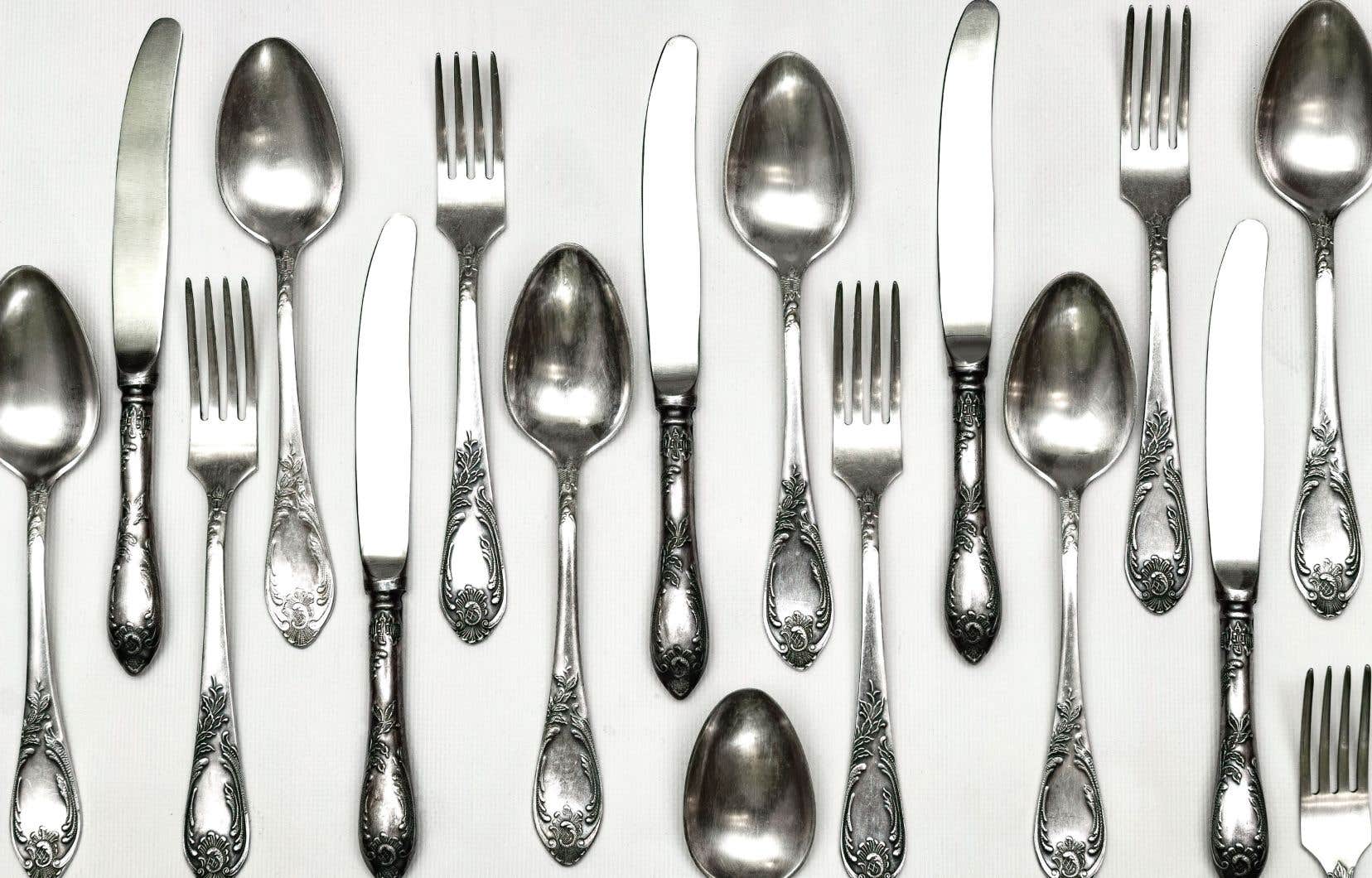Moving season is the perfect time to sort things out. But beware, the old plates or tarnished utensils that you find at the back of the cupboards may have a greater historical value than you think…
Certain pieces of silverware, knives, serving utensils or sugar bowls bear witness to a time when silver was considered a heritage of choice to offer to newlyweds. Even if silverware is less fashionable today, it remains the witness of a long tradition in the Belle Province.
In the early days of the colony, silverware came from Europe. They either traveled in the suitcases of the settlers or were subsequently imported. The journey is not without risk: the boats sometimes fall into the hands of the corsairs and it also happens that they sink to the bottom of the sea, carrying their precious cargo.
The silverware imported into New France was mainly intended for the Church and, to a lesser extent, for seigneurial families.
Domestic silverware, on the other hand, is intended for serving and eating dishes. Spoons and forks, plates, bowls and pitchers are used for the common meals of wealthy families. However, little silverware from this period has come down to us. Some pieces were lost in fires, but the majority of them were melted down to make new ones. It is that silver is a rare metal: the supply in the colony is difficult and expensive. Most of the coins are therefore fashioned from existing elements or from old or commonly used coins. From the beginning of the XVIIIe century, there are local goldsmiths who repair existing pieces and create simple pieces, which it would be too expensive – or too risky – to bring from France. Quickly, craftsmen trained in the metropolis carved out a solid reputation in Quebec and in Montreal. They hand-mold cups, bowls (kinds of bowls with two handles in which soups and dishes in sauce are served) and utensils. The modest decorative elements are usually engraved behind the spoons and forks since at the time, these were placed face down on the table.
Even if the vast majority of silver objects are still intended for churches, domestic silverware is very popular among the wealthiest of the colony. In addition to displaying the social status and wealth of their owner, these coins represent a safe bet; they can be bequeathed, redeemed at any time and are worth at least their weight in money. It is a heritage purchase, an investment. What’s more, many of these objects are made to order and bear the insignia or the coat of arms of the family, in addition to the goldsmith’s hallmark, made up of the initials of the craftsman or of a symbol of his own. This kind of chiseling protects them against theft, because they are always identifiable, unless they are recast to erase the inscriptions.
Evolving technologies
In the decades following the English Conquest, the British influence was felt even in silverware. Styles evolve, as do techniques. In the second half of the XVIIIe century, a new manufacturing method transformed the work of goldsmiths: sheet silver allowed them to cut out pieces and put them together rather than molding everything by hand. Montreal was then the Canadian capital of silverware production. Teapots, cups, pepper pots, sugar bowls and mustard pots find their place on the tables of the richest people. The diversity of silverware says a lot about the culinary habits of the high society of the time. We find, in fact, utensils for very specific uses, such as the marrow spoon, the fish spatula or the nutmeg grater, which attest to the diversity and richness of the menus in these large establishments.
Pieces are still imported from Europe and some are retouched by local goldsmiths to adapt them to Canadian fashion and engrave the initials of their owner.
At the turn of the 1850s, a technological discovery disrupted the silverware market. Electroplating, which makes it possible to plate a thin layer of metal on another metal (in particular copper or brass), launches the manufacture of articles of lesser price covered with a thin film of silver. These parts, while deceptive when new, quickly show signs of wear, exposing the underlying metals. New mechanization processes also made it possible to mass-produce silverware for daily use. This democratization of the precious metal upsets the world of goldsmithing. Possession of silver items is no longer the prerogative of the ultra-rich, but the latter are still the only ones who can obtain high-quality solid silver items made by artisans. They are therefore more often asked for commemorative coins to mark events or occasions than for silverware for culinary use; and these pieces are frequently intended for display rather than everyday use.
Falling popularity
At the turn of the XXe century, Montreal remains a hub of Canadian silverware production. In 1879, Henry Birks founded the company of the same name, which is still in business today. The family business becomes, in the space of a few decades, a staple of silversmithing in the country, buying up rival distributors and retailers. Until 1990, it was in the Quebec metropolis that it manufactured its utensils and containers for culinary use. Although the Montreal brand is always synonymous with luxury and exclusivity, today it mainly sells jewelry. Sign of the times, no more utensils or culinary tools appear in its virtual catalog.
More silverware is now found in antique shops than in retailers. Expensive, silver also requires a lot of maintenance to prevent it from tarnishing. For many families, stainless steel has advantageously replaced it. The popularity of silverware as a wedding or christening gift has fallen over the past few decades in favor of more everyday items that are more useful and require less elbow grease to polish. But when used frequently, silver is less likely to tarnish and adds a touch of elegance to any table. Maybe it’s time to bring those spoons hidden in a box in the attic back to life?
